Waste Clearance Reading: Ensuring a Cleaner, Greener Community
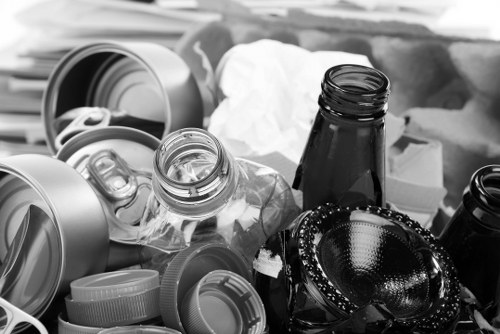
Waste clearance plays a pivotal role in maintaining the cleanliness and sustainability of our communities. In Reading, effective waste management not only keeps the environment pristine but also promotes a healthier lifestyle for all residents.
Proper waste clearance involves the systematic collection, transportation, and disposal of waste materials. It ensures that harmful substances do not accumulate, preventing potential health hazards and environmental degradation.
Moreover, waste clearance is essential for the aesthetic appeal of the area. Clean streets and public spaces enhance the quality of life, making Reading a more attractive place to live and visit.
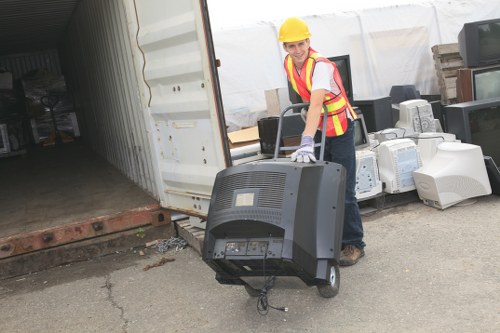
Understanding Waste Clearance
To appreciate the significance of waste clearance, it's important to understand its fundamental components and processes. Waste clearance encompasses various activities aimed at managing waste efficiently.
By implementing effective waste clearance strategies, Reading can minimize waste production and maximize recycling and reuse, contributing to a sustainable future.
Understanding the different types of waste and appropriate clearance methods is crucial for effective waste management. This knowledge helps in reducing environmental impact and conserving natural resources.
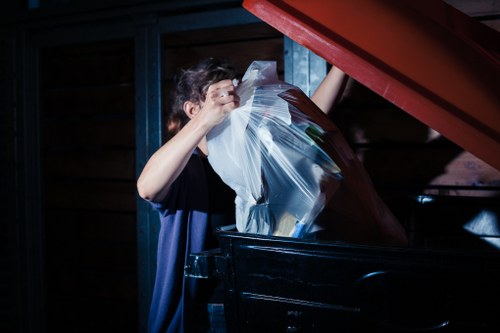
What is Waste Clearance?
Waste clearance refers to the systematic process of removing waste from residential, commercial, and industrial areas. It involves the collection, transportation, and disposal or recycling of waste materials.
Effective waste clearance ensures that waste does not accumulate, which can lead to health risks and environmental pollution. It is a critical component of urban management and public health.
The goal of waste clearance is to manage waste in a way that is both environmentally responsible and efficient, minimizing the negative impacts on the community and the planet.
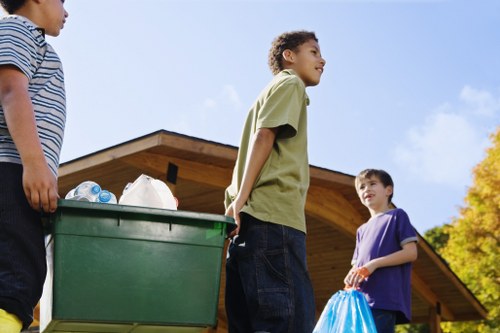
Importance of Effective Waste Clearance
Effective waste clearance is essential for several reasons. Firstly, it helps maintain public health by preventing the spread of diseases that can result from unmanaged waste.
Secondly, it protects the environment by reducing pollution and conserving natural resources through recycling and proper waste disposal.
Lastly, it enhances the aesthetic value of communities, making them more livable and attractive for residents and visitors alike.
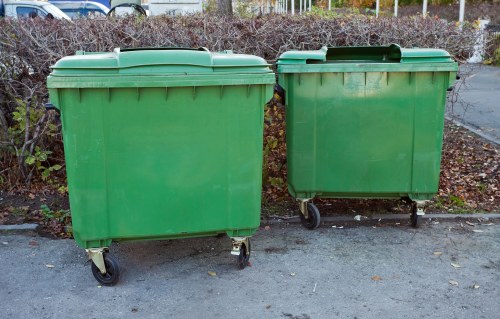
The Process of Waste Clearance
The waste clearance process in Reading involves multiple stages, each crucial for effective waste management. From collection to disposal, each step ensures that waste is handled responsibly.
Understanding this process helps residents appreciate the complexity involved in maintaining a clean and healthy environment.
Let's delve deeper into the various stages of waste clearance to understand how each contributes to overall waste management.
Collection and Sorting
The first stage of waste clearance is the collection and sorting of waste materials. This involves gathering waste from households, businesses, and other establishments.
Once collected, the waste is sorted into different categories such as recyclables, organics, and general waste. Sorting helps in efficiently managing and processing different types of waste.
Proper sorting is essential for maximizing recycling opportunities and ensuring that waste destined for disposal is handled appropriately.
Recycling and Disposal
After sorting, recyclables are processed and reintegrated into the production cycle, reducing the need for new raw materials.
Non-recyclable waste is then prepared for disposal in designated landfills or incineration facilities, ensuring minimal environmental impact.
Efficient recycling and disposal methods are vital for sustainable waste management, helping to conserve resources and reduce pollution.
Challenges in Waste Clearance
Despite advancements in waste management, several challenges persist in achieving effective waste clearance in Reading.
Identifying and addressing these challenges is crucial for improving waste clearance systems and ensuring sustainability.
Let's explore the primary obstacles faced in waste clearance and potential solutions to overcome them.
Environmental Impact
Waste clearance operations can have significant environmental impacts if not managed properly. Improper disposal can lead to soil and water contamination, harming ecosystems.
Reducing the environmental footprint of waste clearance involves adopting eco-friendly practices and technologies that minimize pollution and conserve natural resources.
Community involvement and awareness are also essential in mitigating the environmental impact of waste clearance activities.
Logistical Issues
Managing the logistics of waste clearance presents another major challenge. Efficient collection, transportation, and disposal require coordinated efforts and robust infrastructure.
Urban areas like Reading often face constraints such as traffic congestion and limited disposal facilities, complicating waste clearance operations.
Addressing logistical issues involves investing in better infrastructure, optimizing collection routes, and utilizing technology to enhance efficiency.
Waste Clearance Services in Reading
Reading boasts a range of waste clearance services tailored to meet the diverse needs of its residents and businesses.
Choosing the right service provider is essential for ensuring efficient and reliable waste management.
Let's look at some of the local providers and factors to consider when selecting a waste clearance service in Reading.
Local Providers
- Reading Waste Management Ltd: Offers comprehensive waste clearance services including recycling and hazardous waste disposal.
- ClearAway Reading: Specializes in residential and commercial waste collection with flexible scheduling options.
- EcoClear Services: Focuses on environmentally friendly waste clearance solutions, emphasizing recycling and sustainability.
These providers utilize advanced technologies and adhere to regulatory standards to ensure effective waste clearance.
Residents can choose the provider that best fits their specific needs and sustainability goals.
How to Choose the Right Service
- Assess Your Needs: Determine the types and volumes of waste you generate regularly.
- Service Range: Ensure the provider offers the necessary services, whether it's recycling, hazardous waste disposal, or bulk waste clearance.
- Reputation: Research customer reviews and the provider's track record for reliability and efficiency.
- Cost: Compare pricing structures to find a service that offers value without compromising quality.
- Environmental Commitment: Choose providers that prioritize sustainable practices and have eco-friendly solutions.
By considering these factors, residents and businesses can select a waste clearance service that meets their requirements effectively.
Nearby Areas to Reading and Their Waste Clearance Features
Reading is surrounded by several areas, each with its unique waste clearance features and services. These nearby regions benefit from efficient waste management practices, contributing to the overall cleanliness and sustainability of the greater Reading area.
- Caversham: Located just across the River Thames, Caversham has robust recycling programs and regular waste collection services.
- Tilehurst: Known for its community-driven waste clearance initiatives, Tilehurst emphasizes household waste reduction and recycling.
- Southcote: Offers comprehensive waste management solutions, including bulk waste pickup and hazardous material disposal.
- South Reading: Features efficient waste clearance services with a focus on sustainability and eco-friendly practices.
- Colnbrook: Utilizes advanced waste processing facilities to manage and recycle waste effectively.
- Englefield: Implements strict waste disposal regulations to minimize environmental impact.
- Green Park: Promotes recycling and composting among residents, reducing overall waste volume.
- Katesgrove: Provides specialized waste clearance services for both residential and commercial clients.
- Mighton: Focuses on community engagement and education to improve waste management practices.
- Purley: Equipped with state-of-the-art waste processing plants to handle large volumes of waste efficiently.
These areas complement Reading's waste clearance efforts, ensuring a region-wide approach to effective waste management.
Tips for Effective Waste Management
Effective waste management begins with individual actions. By adopting simple practices, residents can significantly contribute to the overall waste clearance efforts in Reading.
Implementing these tips not only aids in proper waste clearance but also promotes a sustainable and environmentally friendly community.
Here are some practical tips to enhance your waste management practices:
Reducing Waste
Minimizing the amount of waste you produce is the first step towards effective waste management.
- Opt for reusable items instead of single-use products.
- Plan meals to reduce food waste.
- Choose products with minimal packaging.
By reducing waste, you decrease the burden on waste clearance systems and lower your environmental footprint.
Recycling Properly
Recycling is a critical component of waste clearance. Proper recycling ensures that materials are effectively processed and reused.
Here are some recycling best practices:
- Sort recyclables accurately according to local guidelines.
- Clean and dry recyclable materials before placing them in the recycling bin.
- Stay informed about what can and cannot be recycled in your area.
Proper recycling contributes to resource conservation and reduces the need for new raw materials.
Composting
Composting organic waste is an excellent way to reduce landfill burden and create valuable soil for gardening.
- Start a compost bin in your backyard or use a community composting facility.
- Avoid composting meat, dairy, and oily foods to prevent odors and pests.
- Turn the compost regularly to promote decomposition.
Composting transforms organic waste into nutrient-rich compost, benefiting both the environment and your garden.
Future of Waste Clearance
The future of waste clearance lies in innovation and sustainability. As technology advances, new methods and practices emerge to enhance waste management efficiency.
Embracing these advancements can significantly improve waste clearance systems in Reading, making them more effective and environmentally friendly.
Let's explore some of the promising trends shaping the future of waste clearance.
Technological Innovations
Technology plays a crucial role in modern waste clearance. Innovations such as smart bins, waste tracking systems, and automated sorting machines are revolutionizing waste management.
- Smart Bins: Equipped with sensors, smart bins monitor waste levels and optimize collection schedules.
- Waste Tracking: Digital systems track waste generation and disposal, providing valuable data for improving waste management strategies.
- Automated Sorting: Advanced sorting machines enhance the accuracy and efficiency of recycling processes.
These technologies streamline waste clearance operations, reducing costs and increasing effectiveness.
Sustainable Practices
Sustainability is at the heart of future waste clearance efforts. Adopting sustainable practices ensures that waste management contributes positively to the environment.
- Implementing circular economy principles to maximize resource reuse.
- Promoting zero-waste initiatives to minimize waste production.
- Investing in renewable energy sources for waste processing facilities.
By prioritizing sustainability, Reading can lead the way in responsible waste clearance and environmental stewardship.
Conclusion
Waste clearance in Reading is a collective responsibility that impacts the well-being of the community and the environment. Effective waste management practices ensure a cleaner, healthier, and more sustainable future for all.
By understanding the processes, overcoming challenges, and embracing innovative solutions, Reading can enhance its waste clearance systems and set a benchmark for other regions.
Every individual's contribution to waste management matters, creating a significant difference in maintaining the beauty and sustainability of our community.
Frequently Asked Questions
1. What is waste clearance?
Waste clearance is the process of collecting, transporting, and disposing of waste materials from various sources to maintain cleanliness and environmental health.
2. Why is effective waste clearance important for Reading?
Effective waste clearance in Reading ensures public health, environmental protection, and enhances the overall quality of life by keeping the area clean and sustainable.
3. How can residents contribute to better waste clearance?
Residents can contribute by reducing waste, recycling properly, composting organic materials, and using the services of reliable waste clearance providers.
4. What challenges does Reading face in waste clearance?
Reading faces challenges such as environmental impact, logistical issues like traffic congestion, and the need for advanced infrastructure to handle waste efficiently.
5. What are the future trends in waste clearance?
The future of waste clearance includes technological innovations like smart bins and automated sorting, as well as sustainable practices aimed at reducing waste and conserving resources.